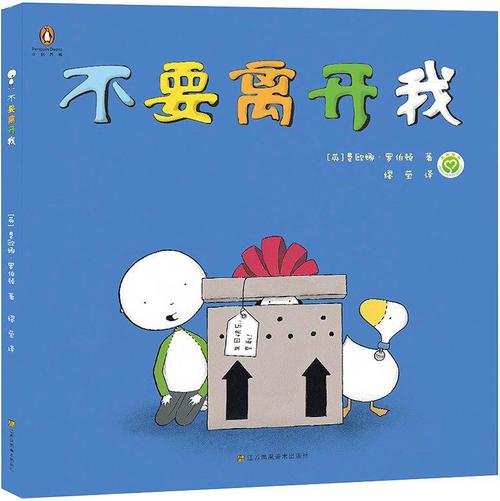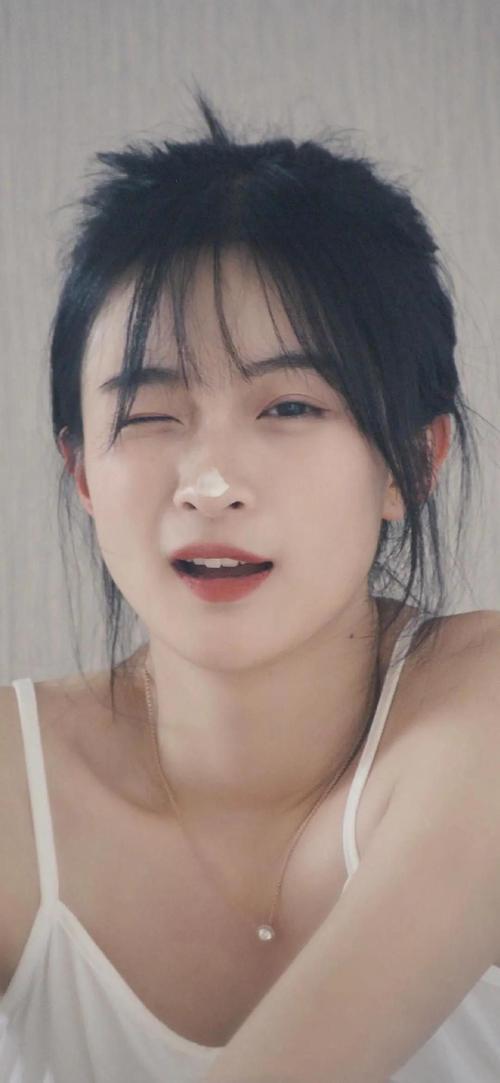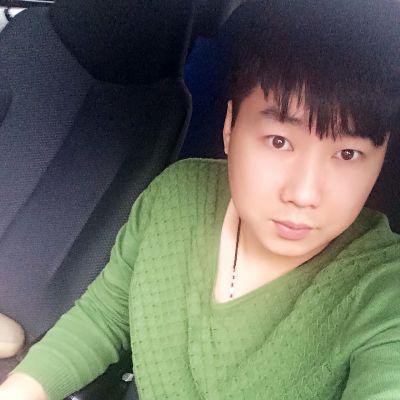考研中的考研科目211翻译硕士英语是指什么
 大审判
大审判 反于大通
反于大通
211是科目代码,而翻译硕士英语才是考试科目。这里的翻译硕士英语指的是你要报考学校自主命题的,不是国家统一命题的。你可以去报考学校官网查这个科目的参考书目或者加考上的学长学姐具体问一下。211翻译硕士英语(100分)【考核内容】完形填空、改错、句子重述、文本缩写、命题作文该科目考查考生是否符合MTI学习要求的英语水平,难度为专业八级。试题形式分为完形填空、改错、句子重述、文本缩写、命题作文五个部分。1、完形填空为 20分,要求根据原文主题、上下文语境,在文章每一空白处填写一个适切的单词。2、改错部分为15分,要求划出文章或句子中的10处错误,并逐一进行改正。句子重述部分为15分,要求在不改变原意的前提下将10个句子用不同语言形式予以重新表达。3、文本缩写为20分,要求把一篇1000单词的英语文章缩写为 300单词的短文。命题作文30分,要求根据所给题目撰写一篇不少于400单词的作文,要求语言规范、结构合理,表达清晰,流畅通顺,逻辑性强。扩展资料:1、翻译硕士专业学位(Master of Translation and Interpreting,缩写MTI),为适应我国改革开放和社会主义现代化建设事业发展的需要,促进中外交流,培养高层次、应用型高级翻译专门人才,决定在我国设置翻译硕士专业学位。2、翻译硕士学位获得者应具有较强的语言运用能力、熟练的翻译技能和宽广的知识面,能够胜任不同专业领域所需的高级翻译工作。3、适合人群:(1)热爱实践的同学适合报考翻硕。(2)汉语写作好的同学适合报考。(3)二外没有学好的同学可以报考。目前,除了北京外国语大学的MTI翻译硕士考试科目有二外以外,其他MTI院校考试项目均为翻译硕士英语或者基础英语。(4)求稳的同学目前可以报考。相比学术型,翻硕还是容易考取一点。所以如果你求稳,又不是非得报考名牌大学,那么,翻硕是一个不错的选择。复习时可以少学一门二外,而考试时又相对容易一点。求稳,翻硕是不错的选择参考资料来源:翻译硕士简介与适合人群-百度百科
跪求2010年考研211翻译硕士英语真题一套。
 六月虫
六月虫 高桂
高桂
以下是上外2010年翻译硕士(MTI)考试的真题,贴出来你看看吧 【翻译硕士二外】一、完形填空(全文录入,题目省略)During the first many decades of this nation’s existence, the United States was a wide-open, dynamic country with a rapidly expanding economy. It was also a country that tolerated a large amount of cruelty and pain — poor people living in misery, workers suffering from exploitation.Over the years, Americans decided they wanted a little more safety and security. This is what happens as nations grow wealthier; they use money to buy civilization.Occasionally, our ancestors found themselves in a sweet spot. They could pass legislation that brought security but without a cost to vitality. But alts know that this situation is rare. In the real world, there’s usually a trade-off. The unregulated market wants to direct capital to the proctive and the young. Welfare policies usually direct resources to the vulnerable and the elderly. Most social welfare legislation, even successful legislation, siphons money from the former to the latter.Early in this health care reform process, many of us thought we were in that magical sweet spot. We could extend coverage to the uninsured but also improve the system overall to lower costs. That is, we thought it would be possible to rece the suffering of the vulnerable while simultaneously squeezing money out of the wasteful system and freeing it up for more proctive uses.That’s what the management gurus call a win-win.It hasn’t worked out that way. The bills before Congress would almost certainly ease the anxiety of the uninsured, those who watch with terror as their child or spouse grows ill, who face bankruptcy and ruin.And the bills would probably do it without damaging the care the rest of us receive. In every place where reforms have been tried — from Massachusetts to Switzerland — people come to cherish their new benefits. The new plans become politically untouchable.But, alas, there would be trade-offs. Instead of recing costs, the bills in Congress would probably raise them. They would mean that more of the nation’s wealth would be siphoned off from proctive uses and shifted into a still wasteful health care system.The authors of these bills have tried to foster efficiencies. The Senate bill would initiate several interesting experiments designed to make the system more effective — giving doctors incentives to collaborate, rewarding hospitals that provide quality care at lower cost. It’s possible that some of these experiments will bloom into potent systemic reforms.But the general view among independent health care economists is that these changes will not fundamentally bend the cost curve. The system after reform will look as it does today, only bigger and more expensive.Rather than pushing all of the new costs onto future generations, as past governments have done, the Democrats have admirably agreed to raise taxes. Over the next generation, the tax increases in the various bills could funnel trillions of dollars from the general economy into the medical system.Moreover, the current estimates almost certainly understate the share of the nation’s wealth that will have to be shifted. In these bills, the present Congress pledges that future Congresses will impose painful measures to cut Medicare payments and impose efficiencies. Future Congresses rarely live up to these pledges. Somebody screams “Rationing!” and there is a bipartisan rush to kill even the most tepid cost-saving measure. After all, if the current Congress, with pride of authorship, couldn’t rece costs, why should we expect that future Congresses will?The bottom line is that we face a brutal choice. Reform would make us a more decent society, but also a less vibrant one. It would ease the anxiety of millions at the cost of future growth. It would heal a wound in the social fabric while piling another expensive and untouchable promise on top of the many such promises we’ve already made. America would be a less youthful, ragged and unforgiving nation, and a more middle-aged, civilized and sedate one.We all have to decide what we want at this moment in history, vitality or security. We can debate this or that provision, but where we come down will depend on that moral preference. Don’t get stupefied by technical details. This debate is about values. 二、阅读理解,回答问题Obama Loses a Round While the jury is still out on what President Obama’s China visit has achieved for the long term, the president has most decidedly lost the war of symbolism in his first close encounter with China. In status-conscious China, symbolism and protocol play a role that is larger than life. U.S. diplomatic blunders could reinforce Beijing’s mindset that blatant information control works, and that a rising China can trump universal values of open, accountable government.During Mr. Obama’s visit, the Chinese outmaneuvered the Americans in all public events, from the disastrous town hall meeting in Shanghai to the stunted press conference in Beijing. In characteristic manner, the Chinese tried to shut out the public, while the U.S. unwittingly cooperated. The final image of President Obama in China that circulated around the world is telling: A lone man walking up the steep slope of the Great Wall. The picture is in stark contrast to those of other U.S. presidents who had their photographs taken at the Great Wall surrounded by flag-waving children or admiring citizens. Maybe Mr. Obama wanted a quiet moment for himself before returning home. But a president’s first visit to the wall is a ritual that needs to be properly framed. Mr. Obama could have waited until the next visit, when he could bring the first lady and the children. Instead, he went ahead by himself to pay tribute to China’s ancient culture. In return, the Chinese offered nothing, no popular receptions, not even the companionship of a senior Chinese leader.The trouble for the U.S. started at the town hall meeting two days earlier — a more scripted event than those organized with students for earlier U.S. presidents. There was no real dialogue, as a programmed audience, most of them Communist League Youth members, asked coached questions. The Chinese also rejected the U.S. request for live national coverage and defaulted on a promise to live-stream the meeting at Xinhua.net, the online version of China’s state-owned news agency. Mr. Obama scored a point when he managed to address the issue of Internet freedom after the U.S. ambassador, Jon Huntsman, fielded him the question from a Chinese netizen submitted online.Meanwhile, Chinese officials garnered from the meeting generous quotes from Mr. Obama affirming China’s achievements and America’s expressions of good will, which were turned into glowing headlines for the Chinese media. In this round of the propaganda skirmish, the U.S. scored one point while China reaped a handful. Mr. Obama was similarly shut out from addressing the public in Beijing. At the Beijing press conference, President Hu Jintao and President Obama read prepared statements and would not take questions from reporters. “This was an historic meeting between the two leaders, and journalists should have had the opportunity to ask questions, to probe beyond the statements,” protested Scott McDonald, the president of China’s Foreign Correspondents Club, but to no avail. In a final dash to break through the information blockade, the Obama team offered an exclusive interview to Southern Weekend, China’s most feisty newspaper, based in Guangzhou. Once again, journalists’ questions were programmed and the paper censored. In protest, the paper prominently displayed vast white spaces on the first and second page of the edition that carried the interview. Propaganda officials are investigating this act of defiance.Only the Obama team knows for sure how they allowed themselves to be outmaneuvered. Unwittingly, the U.S. helped to proce a package of faux public events.Pundits argued that the visitors were not supposed to impose the “American way” on China and that America needs to respect Chinese practices. The argument is both patronizing and condescending. Increasingly, the Chinese public has been clamoring for greater official transparency and accountability, while the Chinese government has been making progress on these fronts. No one in his right mind would ask Mr. Obama to lecture Beijing on human rights. But the Chinese public deserves better accounting, no less than Americans citizens.To their credit, U.S. officials did try to get their message out online. But it was the Chinese bloggers who were most active in challenging official information control. They at least fought the good fight with growing confidence, a fight the Americans seem unable to wage effectively. 三、写作。题目是 《waste not, want not》 【英语翻译基础】一、名词解释MDGS Millennium Development Goals 千禧年发展计划Ban Ki-moon 潘基文国务卿 Secretary of State雷曼兄弟(Lehman Brothers)次贷危机subprime lending crisis西部大开发战略strategy of western development 二、英译中China's bubblesA lot of things in China carry a whiff of excess. The cost of garlic is among them: wholesale prices have almost quadrupled since March. A halving of the planting area last year, and belief in the bulb's powers to ward off swine flu, provide some justification for the surge. But anecdotes of unbridled trading activity in Jinxiang county, home to China's largest garlic plant, suggest that the most likely cause is the most obvious – the abundant liquidity swilling through the system. New loans in China may top Rmb10,000bn this year, double the run-rate of the preceding years; 2010 should bring another Rmb7-8,000bn.In the week that Dominique Strauss-Kahn, head of the International Monetary Fund, said asset bubbles were a cost worth paying for reviving growth through loose monetary policy, China needs to distinguish between good ones and bad ones. A bubble in garlic is small, financed by private speculators, and relatively harmless when it bursts. Bubbles in proctive assets – roads, bridges, telecom lines – are also tolerable; capital has been put in place that can be exploited by somebody.But bubbles in property – financed by banks, on non-proctive assets – are doubly destructive. Zhang Xin, chief executive of Soho China, one of the country's most successful privately owned developers, believes that rampant wasteful investment in commercial property has already undermined China's long-term prospects. As for housing, which China began privatising just 11 years ago, prices rose at an annualised rate of 9 per cent between September and October – significantly higher than the ongoing 2.25 per cent one-year deposit rate and the 5.31 per cent one-year lending rate. What's more, this was the eighth successive month of above-trend growth in the national house price index. So far, attempts to arrest price rises have been minor – restrictions你想报哪个学校呢?每个学校的侧重点不同,我建议你给你选中的学校打电话订购试卷。现在买还不晚……翻译硕士包括:基础英语,翻译,政治,综合
英语考研考翻硕要考哪些科目
 断头气
断头气 阖户昼瞑
阖户昼瞑
政治理论3538、翻译硕士英语、翻译基础、汉语写作与百科知识。翻译硕士考试科目主要有政治理论、翻译硕士英语、翻译基础、汉语写作与百科知识其中南京航空航天大学考第二外语(即非英语的其他语种),其他学校只考翻译硕士英语。参考书目为《翻译硕士MTI考研手册》、《翻译硕士MTI真题汇编》;考试大纲为《硕士学位研究生入学资格考试指南(2005年版)》(科学技术文献出版社)。翻译硕士专业学位由经国家批准的翻译硕士专业学位研究生培养单位授予。翻译硕士专业学位证书由国务院学位委员会办公室统一印制。扩展资料:考研要求规定:1、同等学力申硕根据《中华人民共和国学位条例》规定,具有研究生毕业同等学力的人员,都可按照《国务院学位委员会关于授予具有研究生毕业同等学力人员硕士、博士学位的规定》的要求与办法,向学位授予单位提出申请。2、研究生国家助学金用于资助全国普通高等学校纳入全国研究生招生计划的所有全日制研究生(有固定工资收入的除外),补助研究生基本生活支出。获得资助的研究生须具有中华人民共和国国籍。3、硕士研究生按其学习方式分为全日制硕士研究生和非全日制硕士研究生两种。全日制和非全日制研究生考试招生依据国家统一要求,执行相同的政策和标准。参考资料来源:百度百科-翻译硕士
英语考研 翻译硕士
 末班车
末班车翻译硕士英语的历年真题怎么找
 其我独芒
其我独芒 麻雀侠
麻雀侠
1980-2013年考研英语历年真题集含答案解析地址:http://wenku..com/view/27dbee3b3968011ca30091f1.html?re=view*******************************您好,答案已经给出,请您浏览一遍有什专么不懂属的地方欢迎回复我!如果满意请及时点击【采纳回答】按钮或者客户端的朋友在右上角评价点【满意】您的采纳,是我答题的动力也同时给您带来知识和财富值***************************************************
英语翻译硕士考研难度分析
 千子
千子 红丝错
红丝错
英语翻译硕copy士考研难度分析这个应该是特别难的 如果你要是有想这方面的了解的话 你可以问下你们学校的导师 也可以问一下你们学校的学姐 看他们是否 了解这个 如果要实在不知道的情况下 你可以看一些百度上百度上去搜一下
急急急~2018年云南大学翻译硕士考研真题,复试线,参考书?
 鬼怪屋
鬼怪屋 普契尼
普契尼
大家好,我今年有幸考上了,分享以下我的经验吧。云大题目一般,题型比较固定。回建议多做真题,各答个院校的真题都做一下。笔试时,大多数学校会给一张白纸,让大家把译文直接写在纸上。建议大家带把直尺,写的时候放在白纸上,避免段落过度倾斜,影响整张答卷的整齐美观。还有一点需要提醒大家注意,在复试笔试时,大家不可将翻译统统写在草稿纸上,等到最后才誊写到答题纸上。万一如果来不及誊写,之前的努力都将化作泡影。这段时间需要通过一些练习来保持我们的对翻译的感觉,保持翻译的速度,这样在笔试时才不至于不知如何准确表达,或者不能在规定的时间内完成笔试任务。以下是我看过的参考书和资料:1-《英译中国现代散文选》张培基(三册中至少一册) 2-《高级翻译理论与实践》叶子南3-《中国文化读本》叶朗 朱良志 4-《翻译硕士英语真题解析》天津科技翻译出版社:包含全国40多所名校的翻译硕士英语真题,考研必备资料5-《汉语写作与百科知识真题解析》天津科技翻译出版社:59页的翻译硕士考试指南 30多所院校的448真题6-《汉语写作与百科知识》 (白皮书)李国正主编,天津科技翻译出版社
急求中山大学考研 翻译硕士英语和基础英语 真题答案 在线等
 张琳
张琳翻译专业学生考研(翻译硕士)
 尸兄
尸兄 怨天怨地
怨天怨地
考研的复话可以给自己一个制更广泛的空间去思考和学习,其实我个人感觉研究生的几年还是很有意义的,一方面你会自己以第一人称开始思考以后的发展问题,另一方面对自己的学历经历都是一个不错的提升,学校相比于职场选择的机会、未来发展其他选择的可能性更高一些。从你的专业来讲,我觉得你考研的时候专业可以自己考虑一下,建议拓宽一些,做一些交叉的学习,比如你现在有外语和语言学的基础,是不是可以往机器翻译、文字信息智能处理这方面转转,专业不是很了解,说的不对的请包涵~ 希望能帮到你,我是刚从学校出来的,总的感觉工作不要着急,但是学习的机会真的要去好好珍惜~

 40004-98986
40004-98986





